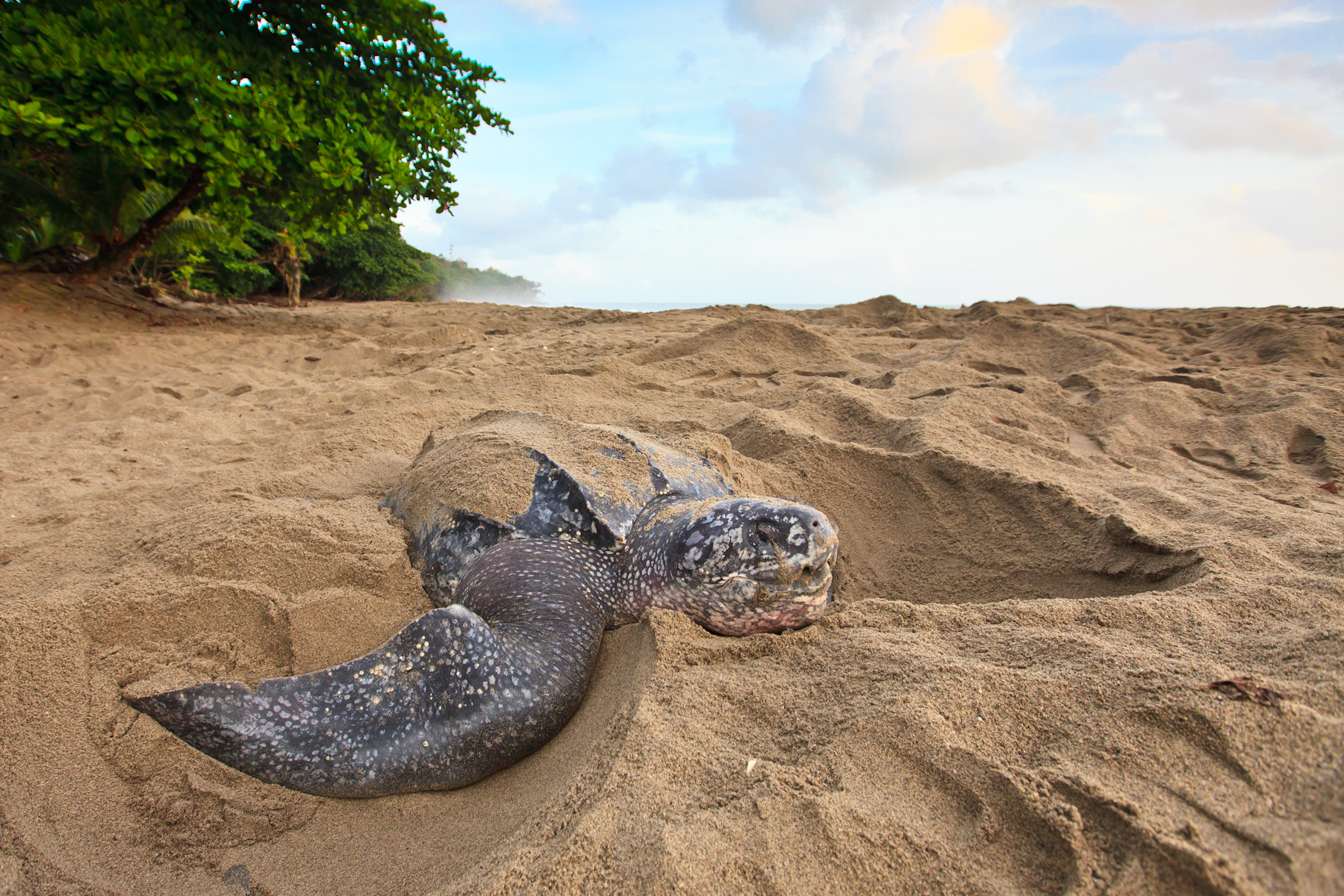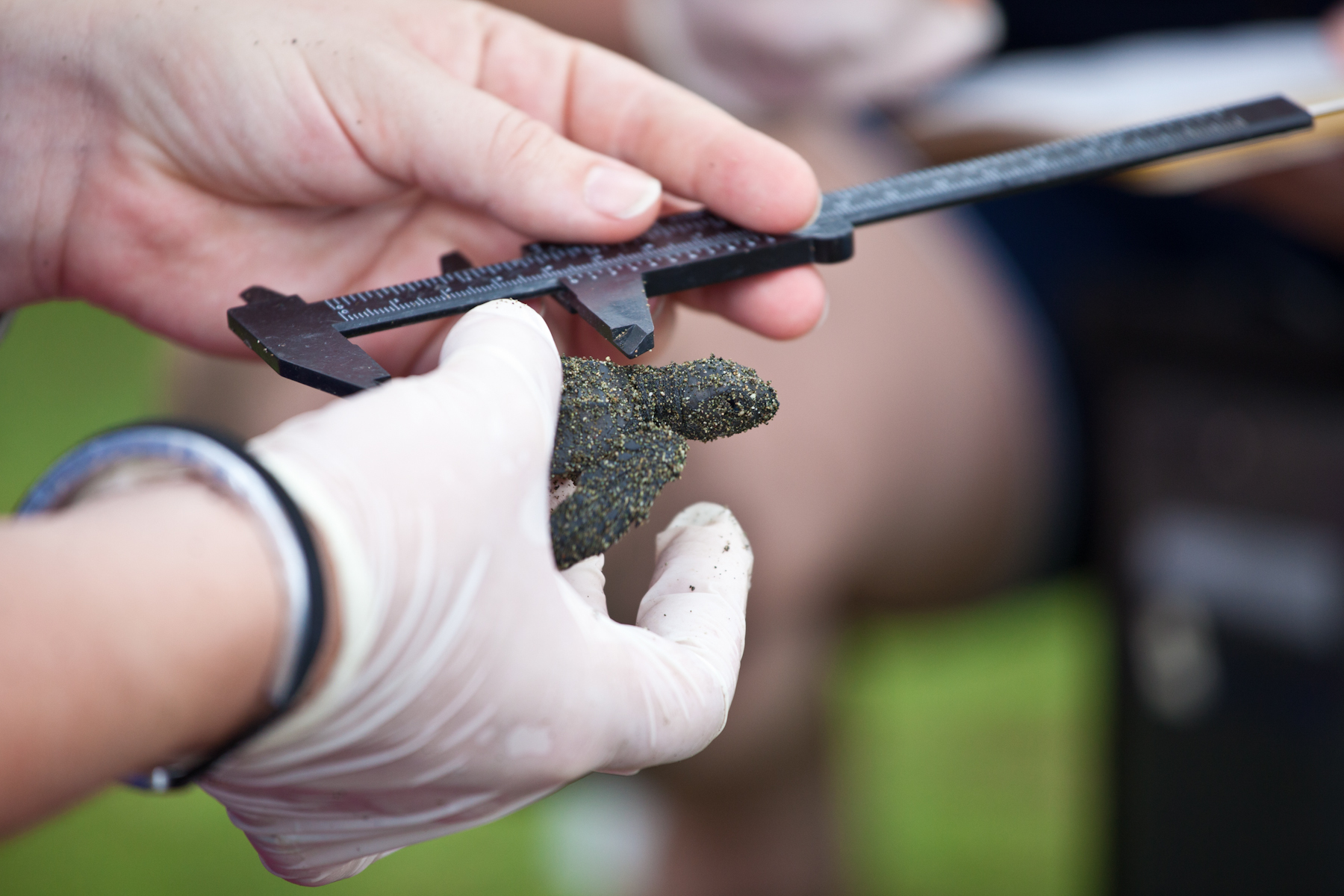SWOT Develops Minimum Standards for Monitoring Effort and Census Data
A leatherback turtle nests on Grande Riviere Beach in Trinidad. Leatherbacks in the western Atlantic grow larger and lay more eggs than their counterparts in the eastern Pacific. © Brian Hutchinson
For the past four years, SWOT has received sea turtle nesting data from SWOT Team members around the world and has displayed those data in maps that provide snapshot status assessments of nesting distribution and abundance. Because of the vast diversity of ways in which data are collected and reported on different beaches around the world, quantitative comparative analyses of nesting data have been next to impossible.
Until now.
During the past year, SWOT has developed a strategy to achieve the long-term goal of making SWOT a global monitoring system for sea turtle populations and species. To do this, we are developing minimum standards for SWOT data that enable comparisons across sites with different levels of monitoring effort, and allow for the estimation of population abundances and long-term population trends. We convened two technical meetings (Loreto, Mexico, in January; and West Virginia, U.S.A., in June) that brought together some of the sea turtle community’s leaders in data collection and statistical techniques.
The main outcome of these meetings is a one-of-a-kind statistical modeling program that will be a tool for researchers and data providers to analyze their data and to estimate actual nesting numbers in the absence of complete monitoring coverage. Eventually, this model will be freely available (online) as a software program, and SWOT Team members will be able to run their data sets through the model to estimate nesting numbers for situations in which beach monitoring is incomplete. This capability will allow us to compare nesting sites with different levels of monitoring effort and, eventually, to detect nesting population trends within a reasonable time frame.
In addition, we are developing a SWOT minimum data standards manual that will outline recommendations for minimum monitoring guidelines and will include all possible monitoring schemes used by nesting beach programs around the world. This manual will allow different researchers to select the monitoring scenario that best fits the logistics of their study site, and it will ensure that resulting data meet minimum standards and can be included in future abundance and trend analyses.
In the future, we plan to build a Web-based interface that will facilitate easy data entry and will automatically generate nesting abundance estimates for the SWOT database, as well as a practical report for SWOT Team members to use for their projects. Those processes are ongoing, but we expect to launch and implement the minimum data standards early in 2009, and we look forward to the input of the SWOT Team as products are tested and put to use.
Finally, we have also revamped how SWOT collects, compiles, and displays data contributed by SWOT Team members. We have restructured the SWOT database and have improved the data request form to include greater detail to ensure that we are collecting the appropriate information from respective nesting beaches. We initiated the most recent round of data requests in October 2008, and we welcome continued contributions from the SWOT Team and new data providers.
To enhance our display and outreach abilities, SWOT is teaming up with the Duke Marine Geospatial Laboratory’s OBIS-SEAMAP (Ocean Biogeographic Information System Spatial Ecological Analysis of Megavertebrate Populations) project (http://seamap.env.duke.edu/) to put SWOT sea turtle nesting data in the geospatial context of other marine species (e.g., seabirds and marine mammals) and oceanography. The SEAMAP application will allow users—including SWOT Team members—to interact with SWOT data in an up-to-date, global-scale, biogeographical context.
A volunteer measures a leatherback hatchling. © Brian Hutchinson
SWOT has made its name by showing a wide audience information about sea turtle status in a common, global context. With the recent improvements to how we collect, analyze, and display data contributed by SWOT Team members, SWOT can more effectively assess the status of sea turtle species and communicate it with the world. As SWOT makes strides toward becoming the premiere global monitoring initiative for sea turtles, it is heartening to remember that SWOT derives its strength from the growing network of SWOT Team researchers, field workers, conservationists, and enthusiasts around the world.


